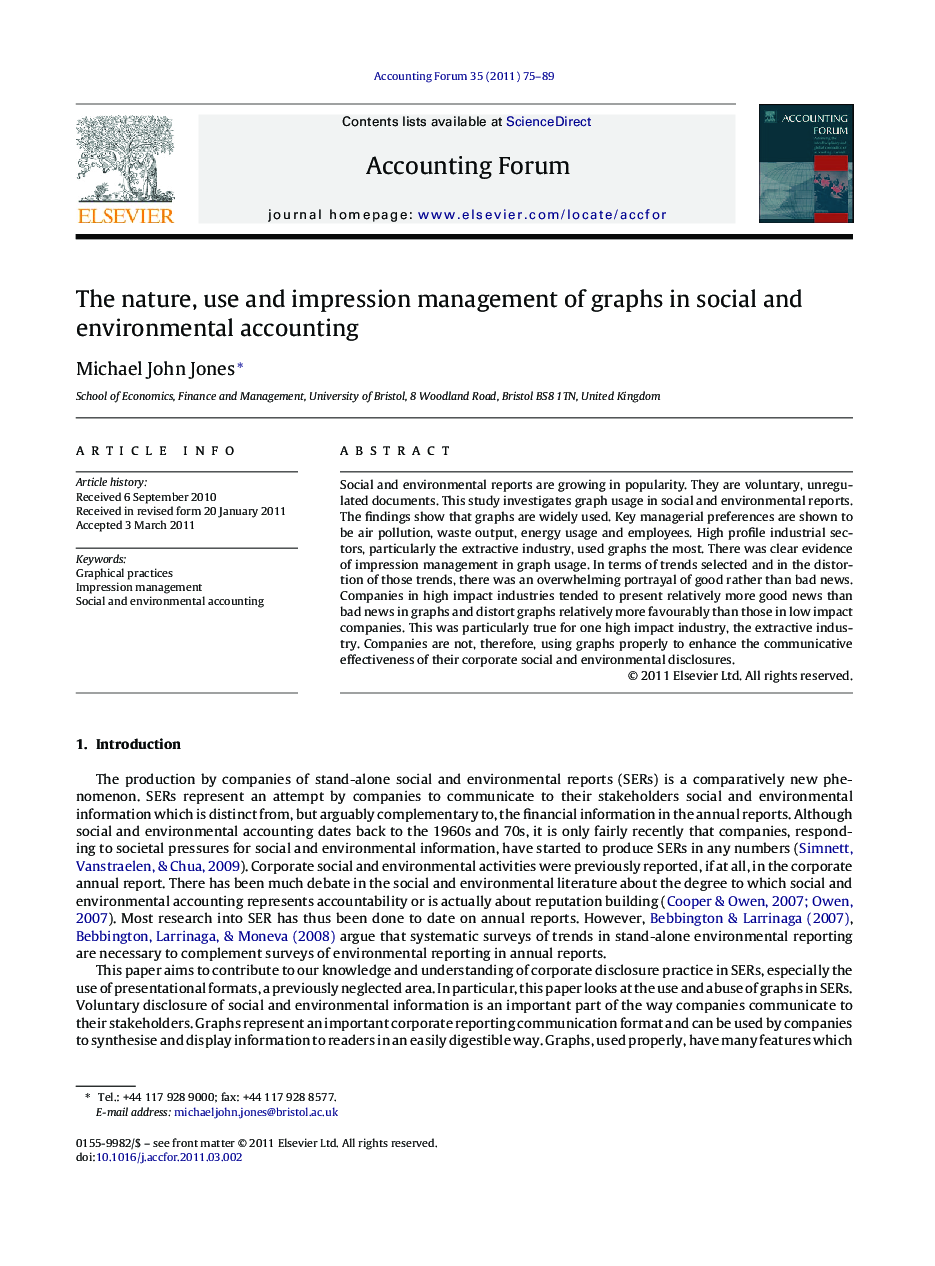| Article ID | Journal | Published Year | Pages | File Type |
|---|---|---|---|---|
| 1003807 | Accounting Forum | 2011 | 15 Pages |
Social and environmental reports are growing in popularity. They are voluntary, unregulated documents. This study investigates graph usage in social and environmental reports. The findings show that graphs are widely used. Key managerial preferences are shown to be air pollution, waste output, energy usage and employees. High profile industrial sectors, particularly the extractive industry, used graphs the most. There was clear evidence of impression management in graph usage. In terms of trends selected and in the distortion of those trends, there was an overwhelming portrayal of good rather than bad news. Companies in high impact industries tended to present relatively more good news than bad news in graphs and distort graphs relatively more favourably than those in low impact companies. This was particularly true for one high impact industry, the extractive industry. Companies are not, therefore, using graphs properly to enhance the communicative effectiveness of their corporate social and environmental disclosures.
► This research shows that social and environmental graphs are widely used in social and environmental reports. This suggests that graphs are an important and valued method of corporate social and environmental communication. ► Graphs were shown to be subject to impression management and were used selectively and distorted so as to give a more favourable view of the company than was warranted. ► This was particularly true in the extractive industry.
